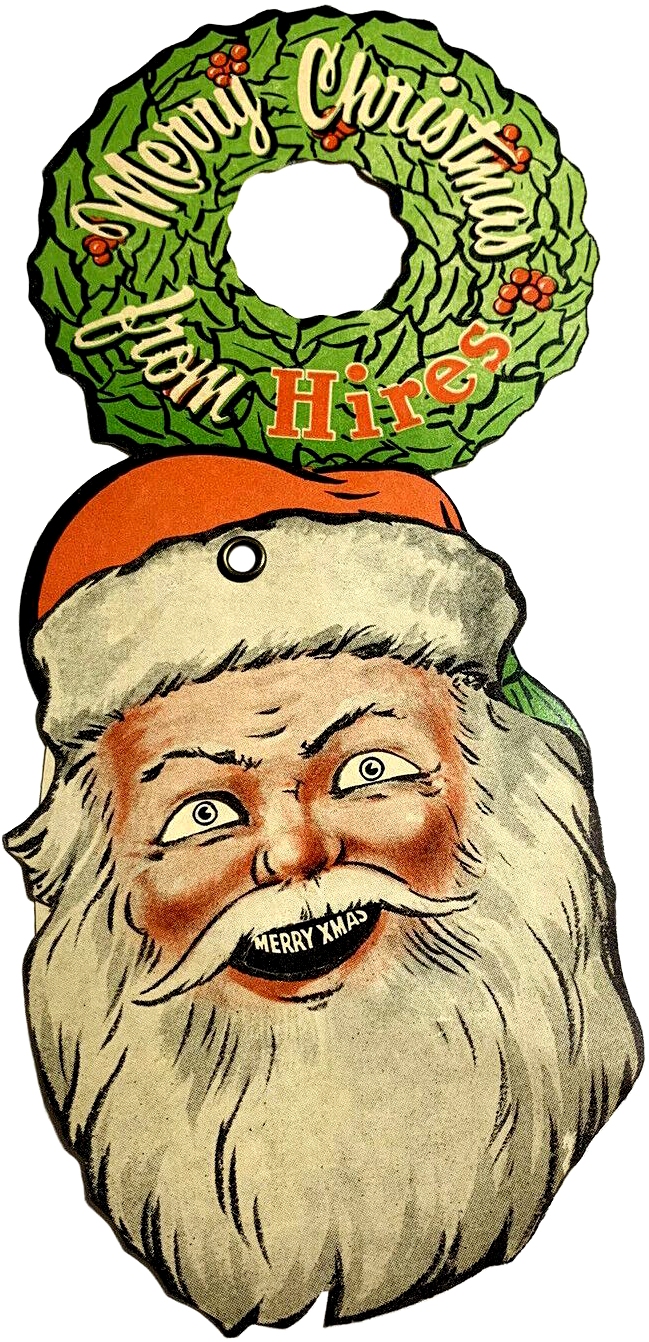1955
IT HAPPENED IN…1955
U.S. business income rose 33%, while farm income
declined another 5.5%.
The federal minimum wage increased to $1.00 per
hour.
Americans enjoyed home remodeling, planning dream
homes, and buying new cars and appliances, especially color
television sets.
Congress funded 45,000 new public housing units
that were to be built by July 31, 1956.
Church construction reached its highest rate in
history.
Educators reported a shortage of 250,000
classrooms and 141,300 teachers.
Two days after President Eisenhower’s heart
attack, the New York Stock Exchange lost $14 billion, the largest
single day loss in history.
The U.S. had stockpiled 4000 atomic bombs while
the USSR had approximately 1000.
Teen idol James Dean died at age 24 when his
Porsche Spider careened off the road.
Christmas weekend’s 609 traffic fatalities set a
new record.
A Davy Crockett fad was started by a movie
produced by Walt Disney.
Over one billion comic books sold for $100
million – four times the combined book budget of all U.S. libraries.
Rock ’n roll’s popularity skyrocketed, in spite
of naysayers who deemed it immoral because of its monotonous,
primitive beat.
Disneyland opened July 18, 1955
Newly introduced soft drinks included Quiky,
Sprig, Uptown, and Get Up.
5,469 U.S. soft drink bottling plants were in
operation. Per capita
consumption was 184.2 bottles.
The company-owned bottling and syrup plant in New
Orleans, Louisiana was closed in January, 1955.
Edward W. David, a Hires employee since 1920 and president since 1950, retired and was succeeded by Peter W. Hires, Fountain Syrup and Fixture Sales Manager for Hires. Time magazine published this announcement January 31, 1955:
PERSONNEL - Changes of the Week
Peter
Wolf Hires, 32, was named president of Philadelphia’s Charles E. Hires
Co. (root beer), succeeding E. W. David, who is retiring.
Peter, whose father remains board chairman, is the grandson of
Pharmacist Charles E. Hires Sr…Young Peter Hires left Haverford College
before graduation to drive a company truck, became a salesman, and rose
to be general merchandising manager.
He expects to boost 1954 sales of nearly $10 million by 20% by
being “a lot more aggressive.”
(Figure 1955-01, Peter
Wolf Hires, Time,
January 31, 1955)
C. Edgar Hires was appointed Public Relations
Director for The Charles E. Hires Company.
Figure 1955-02, C. Edgar Hires,
Greater Philadelphia
Magazine)
Continuing to expand Hires’ market reach, trade magazine advertisements
informed store operators that
Life, Look, and
Saturday Evening Post were
sources for the placement of “high powered merchandising.”
(Figure
1955-03, Chain
Store Age, April, 1955)
The embossed date code on the base of this one gallon, clear, glass jug indicates it was manufactured in 1955 by the Owens-Illinois plant in Oakland, California. The paper Finished Fountain Syrup label lists the ingredients as "WATER, SUGAR, CARAMEL, DEXTROSE (and) OTHER PURE FLAVORING MATERIAL" and has yellowed with age.
(Figure
1955-03.5, Finished Fountain Syrup, one gallon glass jug)
Model 45MPX Hires Multiplex Kegs were made of quarter-sawn white oak
with solid stainless steel hoops, and held 45 gallons of Hires Root
Beer. The single faucet was
patented by the Multiplex Faucet Company of St. Louis, Missouri.
An identical Hires sign was also attached to the opposite side.
(Figure 1955-04, Model 45MPX
Hires Multiplex Keg, 31.0” tall, 21.0” diameter)
Introduction of the "Refreshes RIGHT!" slogan in 1955 included updating the clear plastic pocket protectors that were likely produced for distribution to route salesmen.
(Figure 1955-04.5, plastic
pocket protector, 3.0" x 6.0")
In
addition to bottles, Hires Root Beer became available in flat top, steel
cans during 1955.
(Figure 1955-05, flat top,
steel can)
Cardboard six-pack carriers were also updated with the new "Refreshes RIGHT!" slogan. This "Bottle Master" example was manufactured by the Atlanta Paper Company.
(Figure 1955-05.5, cardboard
six-pack carrier, front and end panel, flat)
(Figure 1955-05.5, cardboard
six-pack carrier, back and end panel, flat)
The May, 1955 issue of
Fountain & Fast Food magazine
carried this announcement concerning expansion of the Hires Snack Bar
line:
The Charles E. Hires Co. will introduce two new
members of their Snack Bar line.
The “Super-12,” a 12-foot model, incorporates the high capacity
Hires keg, counter accommodations for one or two grills or other service
equipment, a built-in refrigerator and a new attractive revolving sign.
The Campus Special Snackette is a small, compact 4-foot 6” bar
featuring Hires keg and a hot dog grill.
Light in weight, it can be easily moved from place to place.
Water storage facilities enable the unit to operate with 110 volt
electrical outlet. Charles
E. Hires Co., Dept F&FF 5174, 206 So. 24th St., Philadelphia
3, Pa.
The inset “SPECIAL!” offer pictured Geronimo and announced the availability of set of collectible, full-color, trading cards featuring famous American Indian Chiefs, free with cartons of Hires Root Beer.
(Figure
1955-06, Life,
May 2, 1955,
Saturday Evening Post, May 7, 1955)
The National Bottlers’
Gazette ran a
full page article entitled “Hires Uses Fork Lift Trucks To Enlarge
Storage Space” in the June, 1955 issue.
Rather than building a new warehouse, Hires opted to use fork
lift trucks and pallets and “storage capacity was practically
doubled…According to Mr. (C. Edgar) Hires, the company has realized a 50
percent saving in truck loading and unloading costs which may add up to
a saving of about two cents a case…As a result…Hires converted their
route trucks so that they could carry the pallet load of 50 cases in the
truck in approximately the same time it would normally take one man to
place one case in the old style route truck.”
Paper posters were produced for use in stores selling six-packs of Hires Root Beer with "Famous American Indian Chief" cardboard bottle toppers attached.
(Figure 1955-07, paper poster,
12.0" x 24.0")
Recipients of Famous American Indian Chief bottle toppers were instructed to “Cut along line indicated for use
in scrapbook or cut out picture of chief for trading card.” There
were six different cards in the set.
(Figure 1955-08, Chief
Geronimo bottle topper, 7.0” x 6.5”)
(Figure 1955-08, Chief Joseph bottle topper, 7.0” x 6.5”)
(Figure 1955-08, Chief Osceola bottle topper, 7.0” x 6.5”)
(Figure 1955-08, Chief Pontiac bottle topper, 7.0” x 6.5”)
(Figure 1955-08, Chief Quanah
Parker bottle topper, 7.0” x 6.5”)
(Figure 1955-08, Chief Sitting
Bull bottle topper, 7.0” x 6.5”)
Hires also distributed 6.75" x 6.0" cardboard bottle
toppers featuring “Famous Flag of American History” trading cards.
There were six different cards in the set.
(Figure 1955-09, “The Alamo
Flag” bottle topper)
(Figure 1955-10, “Cambridge or Grand Union Flag” bottle topper)
(Figure 1955-11, “The Moultrie Flag” bottle topper)
(Figure 1955-12, “The Fremont Flag” bottle topper)
(Figure 1955-13, “Massachusetts Navy Flag” bottle topper)
(Figure 1955-14, “Oliver H.
Perry Flag” bottle topper)
(Figure
1955-15, Life,
June 20, 1955)
The company-owned bottling plant in Albany, New York
was closed in June, 1955.
In
addition to Life,
Look, and
Saturday Evening Post,
Collier’s magazine was also
listed in this trade magazine advertisement.
(Figure
1955-16, The
American Bottler, August, 1955)
Note the addition of a Hires six-pack sitting on the
players’ bench.
(Figure
1955-17, Life,
August 24, 1955)
The cardboard inserts in this menu board under glass have yellowed with age.
(Figure
1955-17.5, menu board under glass, 12.0" x 24.0")
The drive-in restaurant signs were updated again,
with “SO GOOD WITH FOOD” wording added, a throwback to Hires’ 1939
advertising slogan.
(Figure 1955-18, cardboard
drive-in restaurant sign, 5.25” x 6.5”)
Hires provided blank paper sheets for use by restaurants that typed their own menus.
(Figure 1955-18.5, blank paper
menu sheet, 8.5” x 5.5”)
The Sourapas family-owned Hires Bottling Company in
Seattle, Washington distributed pencils advertising Hires Root Beer,
Bireley’s, and Squirt, their licensed franchises.
(Figure
1955-19, pencil)
For
the fiscal year ending September 30, 1955, Hires reported net sales of
$10,111,045 and a $395,976 net profit.
(Figure 1955-20, heavy plastic
sign, 24.0” diameter)
The
back of this hard plastic, pinback button is stamped “Pin-up -
Posterloid Corp. - New York 10, New York.
(Figure 1955-21, pinback
button, 4.0” x 4.0”)
This 26.5" x 19.0" tin chalkboard sign with French wording was produced for use in Canada. "Buvez" translates to "Drink" and "C'est Delicieux!" is "It is Delicious!" It has rolled edges and bears a J.J.B. 55 item number.
(Figure 1955-21.5, Canadian
tin chalkboard sign)
Hires bottlers used a wide variety of crown caps.
(Figure 1955-22, crown caps)
Resurrecting the concept of attracting new customers by giving away free
samples, Hires distributed tin tokens good for a free bottle of Hires
Root Beer, with a bottle deposit required.
(Figure 1955-23, tin token, front and back, 1.5” diameter)
These three similar Hires crown cap proofs were manufactured by Crown Cork and Seal. The backs are blank.
(Figure 1955-23.5, Hires crown cap proof)
(Figure 1955-23.7, Hires crown cap proof)
(Figure 1955-23.8, Hires crown cap proof)
(Figure 1955-24, metal door pusher, 32.75” x 2.5”)
Item number BN-1 was assigned to this small sign manufactured for Hires by the Press Sign Company of St. Louis, Missouri.
(Figure 1955-24.5, tin sign, 24.0” x 3.0”)
(Figure 1955-25, tin sign, 41.5�� x 13.5”)
(Figure 1955-26, embossed tin sign with blackboard, 29.5” x 15.5”)
The Press Sign Company of St. Louis, Missouri
manufactured this sign designated item BN-9.
The design is an updated version of the sign illustrated as
Figure 1952-07.
(Figure 1955-27, embossed
metal sign, 23.5” diameter)
The General Electric Company manufactured this
electric wall clock. The
face design is similar to the previously illustrated Hires sign.
(Figure 1955-28, electric wall
clock, 7.0” diameter, 3.0” deep)
Weather has taken its toll on this metal thermometer.
(Figure 1955-29, metal
thermometer, 27.0” x 8.25”)
The assembly directions for this cardboard display instruct users to fold the end panels back behind the Hires glass, insert and pull the end tabs thru the slots revealing the HAVE A FLOAT wording, and then "pull tape slowly, press against any clean smooth dry surface...making the glass stand out in a 3 dimensional effect. Then attach the ends to back-bar, mirror, shelf or any other conspicuous place." Unfolded the display measures 8.0" x 20.0".
(Figure 1955-29.5, 3-D
cardboard display, unfolded)
(Figure 1955-29.5, 3-D
cardboard display, folded)
This 19.5" x 13.75" cardboard sign continued the "OLDTIME" theme initiated in 1953.
(Figure 1955-29.8,
cardboard sign)
These next four "OLDTIME" cardboard signs measured 12.0" x 18.0".
(Figure 1955-30, cardboard
sign)
(Figure 1955-31, cardboard
sign, 12.0" x 18.0")
(Figure 1955-32, cardboard
sign, 12.0" x 18.0")
(Figure 1955-33, cardboard
sign)
This cardboard sandwich board was assigned item number BT-2.
(Figure 1955-33.3, cardboard
sandwich board, 24.0" x 20.5")
(Figure 1955-33.5, cardboard
sign, 22.0" x 24.0")
The advertising copy on canned Hires was also revised to promote the "OLDTIME" theme. This 12 ounce, steel "MiraCan" was manufactured for Hires by the American Can Company, and subsequently packed by the Hires Canning Company of Thornton, located in Thornton, California. The top is simply marked "Hires."
(Figure 1955-33.8, flat top can,
front and back)
This vending machine was manufactured by the Ideal Dispenser Company in Bloomington, Illinois. The front panel is debossed with the Hires Since 1876 logo. Fifty bottles were hung vertically on rails and continuously cooled while soaking in water refrigerated by a built-in electric compressor. To purchase a drink, customers deposited a coin into the slot on the front of the coin mechanism on the left side of the machine. The coin released an internal catch allowing the customer to lift the stainless steel lid and slide (hence the name) the chosen drink to an opening and extract the bottle. An opener was conveniently located on the front for removing crown caps that fell into the catcher. This example also charged a 2¢ deposit, dropping three pennies into the change tray for the customer. The machine weighs 200 pounds. It measures 42.0" tall, 37.5" wide, and 19.5" deep. Store operators positioned slider machines where they could be watched, otherwise someone could open the stainless steel lid, easily remove crown caps, and drink the contents via a straw without paying.
(Figure 1955-34, Ideal 55
Slider vending machine)
Publication of
Hires to You! Volume 9, Number 4, the October, 1955 issue, was timed
to coincide with the annual American Bottlers of Carbonated Beverages’
convention. The attractive
majorette gracing the cover appears to be leading the Hires bottle.
(Figure
1955-35, Hires
to You! Volume 9, Number 4, October, 1955, front
cover)
Coverage of individual Hires bottlers promotional sales activities included a billboard placed by the Hires Bottling Company of Sacramento, California,...
...a large sign erected by the Hires Bottling Company of Seattle,
Washington,...
…and a prominent supermarket display announcing the
introduction of canned Hires Root Beer in Cleveland, Ohio.
(Figure
1955-35, Hires
to You! Volume 9, Number 4, October, 1955, page 12)
Peter W. Hires, the president of Hires, was pictured receiving the National Sanitation Foundation Testing Laboratory’s approval for Hires’ Snack Bar. Also shown is a huge Hires billboard strategically positioned at the entrance to the New Jersey Expressway, a location 85,000 drivers passed each day, for a total of over 31 million views per year.
(Figure
1955-35, Hires
to You! Volume 9, Number 4, October, 1955, inside
back cover)
This full-page trade magazine advertisement ran
following the Hires Snack Bar’s approval awarded by the National
Sanitation Foundation.
(Figure 1955-36, trade
magazine advertisement)
(Figure
1955-37, The
American Soft Drink Journal, November, 1955)
The company-owned bottling plant in Providence, Rhode
Island was closed in November, 1955.
(Figure
1955-38, The
American Soft Drink Journal, November, 1955)
A new company-owned bottling plant was opened in
Houston, Texas in December, 1955.
This cardboard bottle hanger features Santa Claus
saying either “MERRY
XMAS,” or when rotated slightly, his
eyes move and he says “HI-YA.”
(Figure 1955-39, cardboard
Santa Claus bottle hanger, 8.0” x 4.0”)
These three unused, die-cut, cardboard hangers fit together like a jigsaw puzzle to produce a display picturing Santa and his sleigh loaded with toys pulled by eight reindeer. Interestingly, Rudolph wasn’t included and Dasher’s nose is red instead. Obtaining each of the three hangers required the purchase of a carton containing six 12 ounce bottles of Hires Root Beer.
(Figure 1955-40, three
die-cut, cardboard hangers, Santa and his sleigh)
The year closed with a full page advertisement picturing a Chevrolet delivery truck used by the company-owned Hires plant in Burbank, California.
(Figure
1955-41, The
American Bottler, December, 1955)



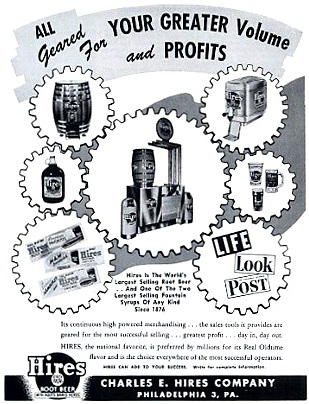
%20Root%20Beer%20With%20Roots-Barks-Herbs%20-%20Finished%20Fountain%20Syrup%20clear%20glass%20one%20gallon%20jug%20with%20paper%20label.jpg)

%20Root%20Beer%20With%20Roots-Barks-Herbs%20Refreshes%20RIGHT%20-%20plastic%20pocket%20protector.jpg)

%20Root%20Beer%20With%20Roots-Barks-Herbs%20-%20cardboard%20six-pack%20carton%20-%20front%20and%20end%20panel.jpg)
%20Root%20Beer%20With%20Roots-Barks-Herbs%20-%20cardboard%20six-pack%20carton%20-%20back%20and%20end%20panel.jpg)






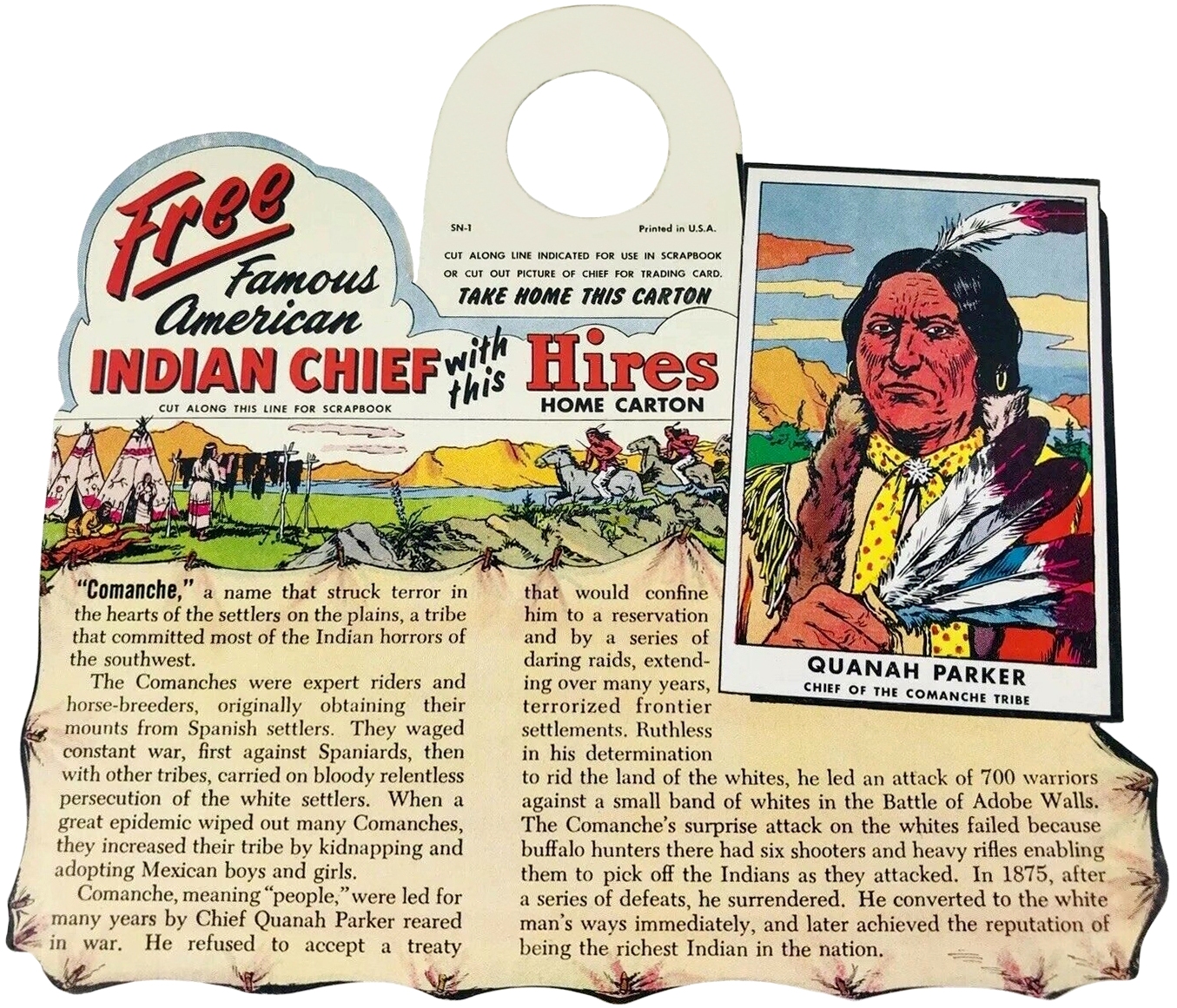







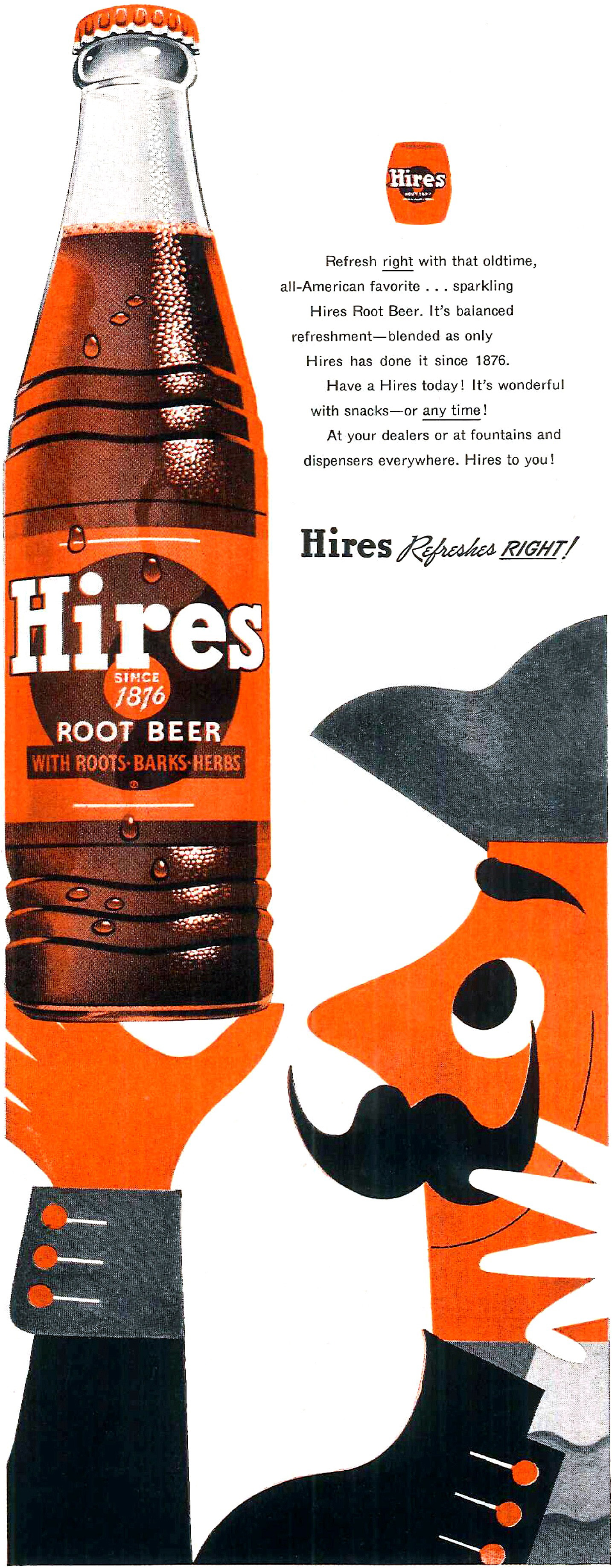


%20So%20Good%20With%20Food%20-%20menu%20board%20under%20glass.jpg)

%20-%20paper%20menu%20sheet.jpg)


%20Root%20Beer%20With%20Roots-Barks-Herbs%20C'est%20Delicieux%20(TV%20screen)%20-%20Canadian%20tin%20sign.jpg)

















%20Root%20Beer%20With%20Roots-Barks-Herbs%203D%20cardboard%20display%20-%20unfolded.jpg)
%20Root%20Beer%20With%20Roots-Barks-Herbs%203D%20cardboard%20display%20-%20HAVE%20A%20tab.jpg)
%20Root%20Beer%20With%20Roots-Barks-Herbs%203D%20cardboard%20disp;ay%20-%20glass.jpg)
%20Root%20Beer%20With%20Roots-Barks-Herbs%203D%20cardboard%20display%20-%20FLOAT%20tab.jpg)



%20Root%20Beer%20Float%20-%20cardboard%20sign.jpg)
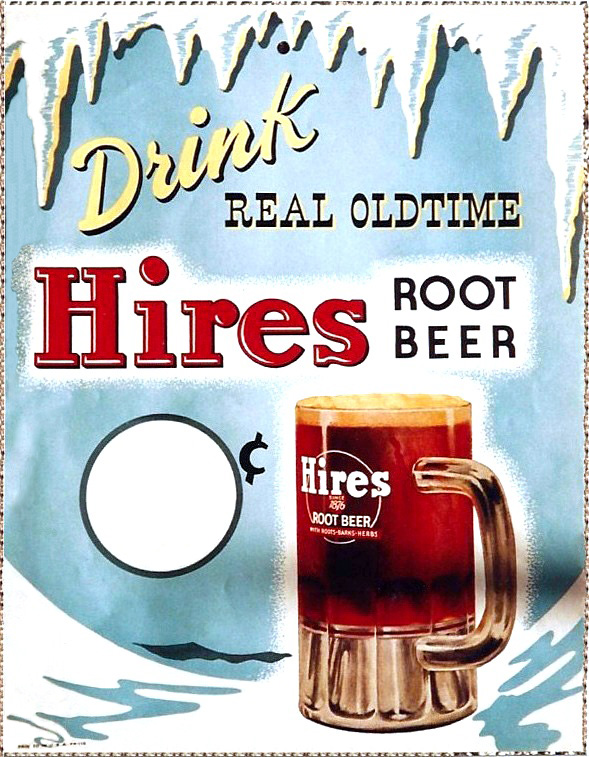
%20Root%20Beer%20With%20Roots-Barks-Herbs%20-%20Delicious%20OLDTIME%20Flavor%20-%20cardboard%20sandwich%20board%20BT-2.jpg)

%20Root%20Beer%20With%20Roots-Barks-Herbs%20The%20Oldtime%20Flavor%20-%20flat%20top%20can%20-%20front.jpg)
%20Root%20Beer%20With%20Roots-Barks-Herbs%20The%20Oldtime%20Flavor%20-%20flat%20top%20can%20-%20back.jpg)







%20Hires%20(Since%201876)%20Root%20Beer%20With%20Roots-Barks-Herbs%20-%20The%20American%20Soft%20Drink%20Journal.jpg)

